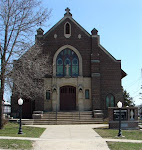Aloysius Gonzaga, Thomas More, and second marriages
June 21st, St. Aloysius Gonzaga
June 22nd, St. Thomas More
While St. Aloysius Gonzaga is notable for his great purity – indeed, not only did he shun all impurity, but it is said that he did not even look upon the face of any woman, not even his own mother! – St. Thomas More is recognized as one of the great married saints of the modern Church. Certainly, St. Thomas More was mot pure and chaste, but St. Aloysius lived out the evangelical council of chastity to is perfection through a life of perpetual continence and virginity (i.e. avoiding all sexual pleasure).
And so, we see something of a tension: Can the Church on the one hand teach that St. Aloysius is a better example of purity on account of his perfect celibacy, and on the other hand still honor and reverence St. Thomas More who was married not only once but twice (after his first wife died)? How is it that the Catholic Church can exalt celibacy without degrading marriage?
The marriages of St. Thomas More
While many are aware of the virginal purity of St. Aloysius Gonzaga, who died at the young age of twenty-three, the married life of St. Thomas More is perhaps less well known. He married Jane Colt in 1505, when he was about twenty-seven and she only about eighteen. Having had four children with Jane (Margaret, Elizabeth, Cicely, and John), she died in 1511.
Upon the death of his first wife, St. Thomas More remarried almost immediately. His second wife was herself a widow named Alice Middleton. While Alice had a daughter from her first marriage, the two never had any children of their own.
In St. Thomas More, then, we have an example not only of a married man, but even of a widower who remarried, who has become a saint.
The celibate vocation is more perfect
The tradition of the Church and the wisdom of the saints, rooted also in the explicit teaching of Sacred Scripture (cf. 1 Corinthians 7), maintains that the celibate vocation is the greatest and most perfect of all. Indeed, by vowing perfect and perpetual continence, religious monks and nuns together with diocesan priests of the West (and even certain lay people, like the numeraries of Opus Dei) live on earth something of the life of heaven, where there will be no marriage.
The life of consecrated virginity is a sign of the glory of heaven and also a most secure means of whole-hearted devotion to the service of Christ and his Church. Surely, it is not that married people are unable to give their hearts to Jesus, but they will be divided. Divine Scripture teaches the same:
He that is without a wife, is solicitous for the things that belong to the Lord, how he may please God. But he that is with a wife, is solicitous for the things of the world, how he may please his wife: and he is divided. (1 Corinthians 7:32-33)
Essentially, the wisdom of the saints is that, if a man is able to live without the pleasures and supports of married life (which, of course, include but also go far beyond sexual intimacy), then he ought to strive for the more perfect life of celibacy.
For the rest of the article click here: The New Theological Movement


